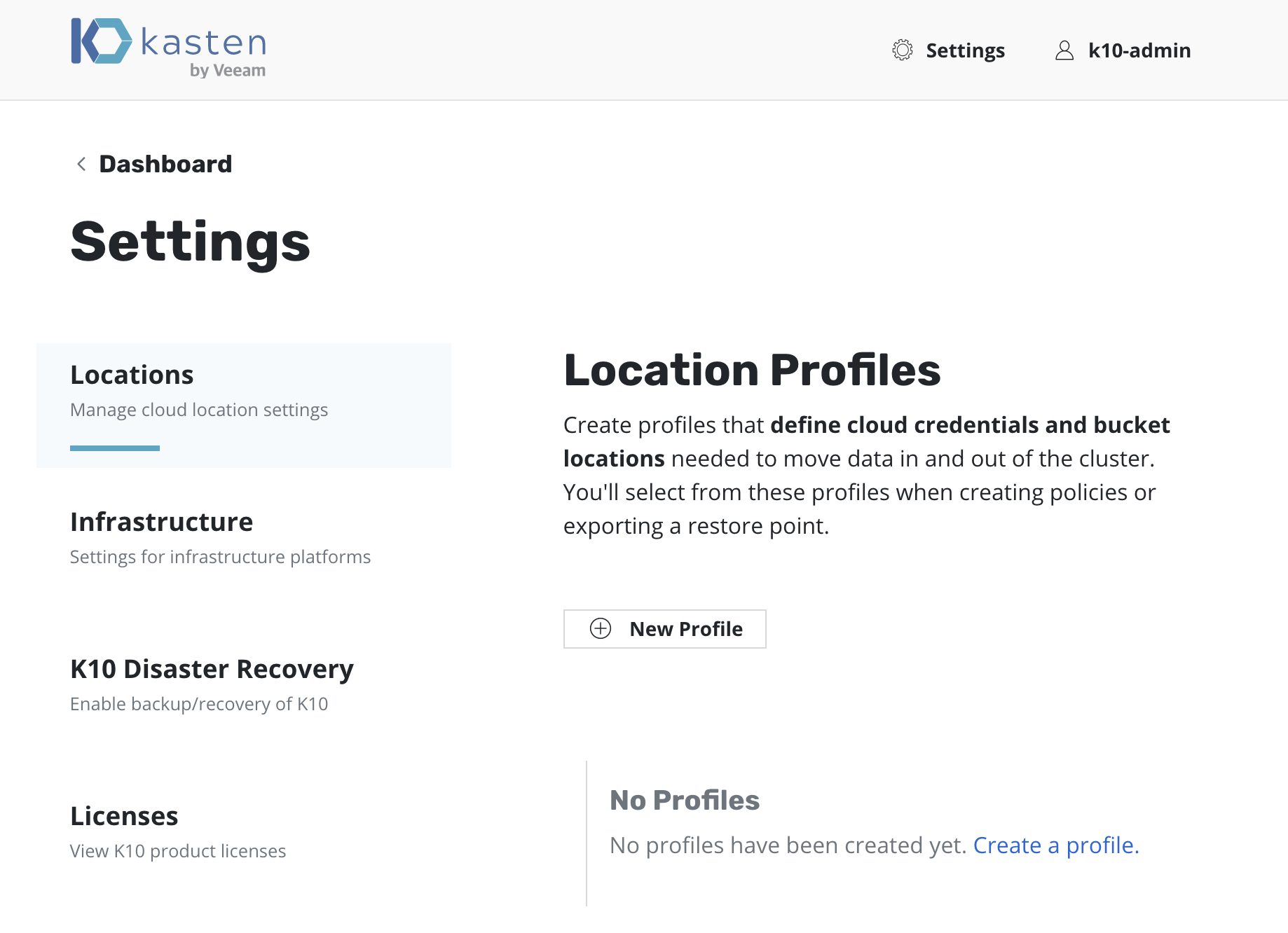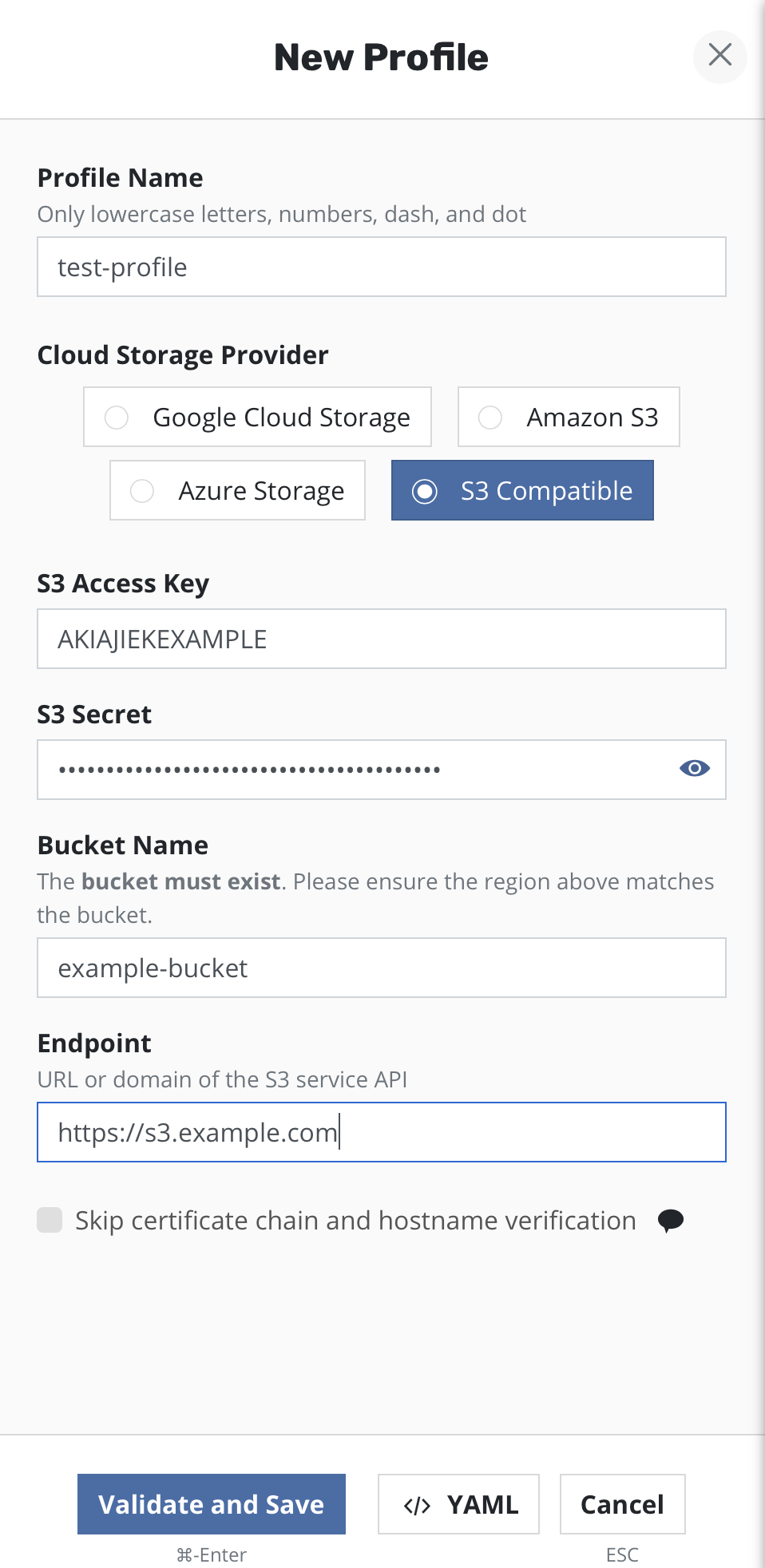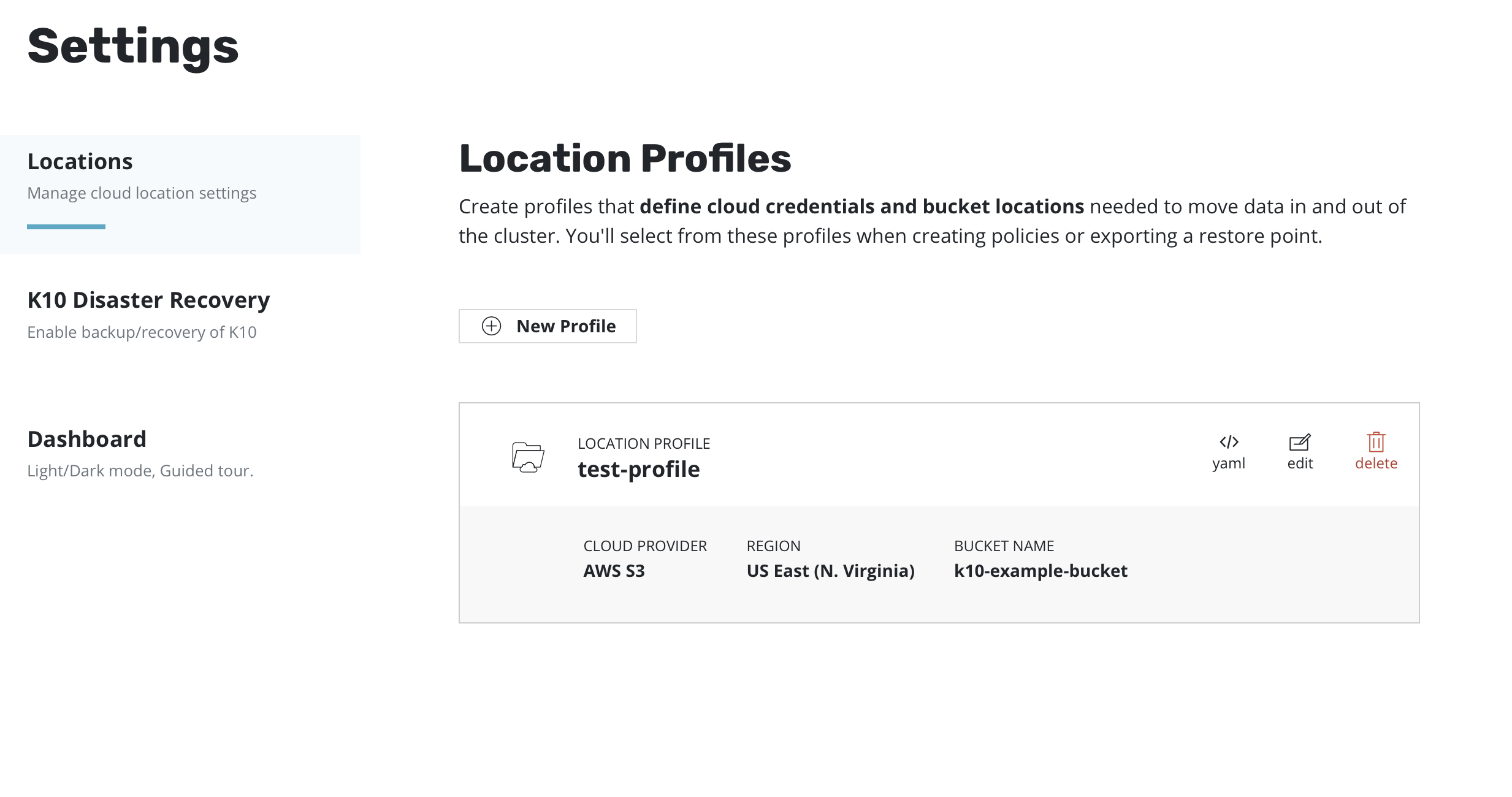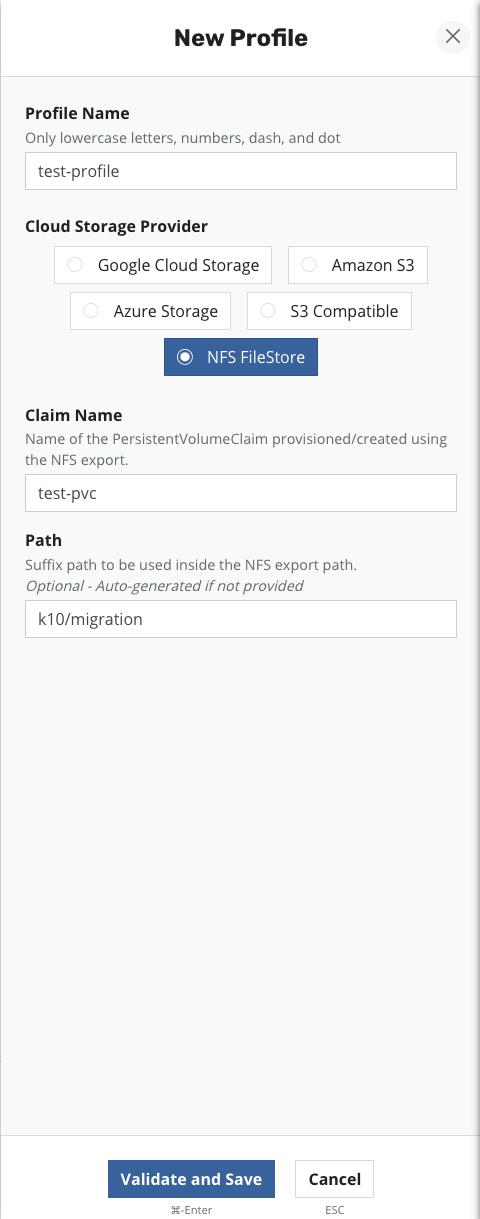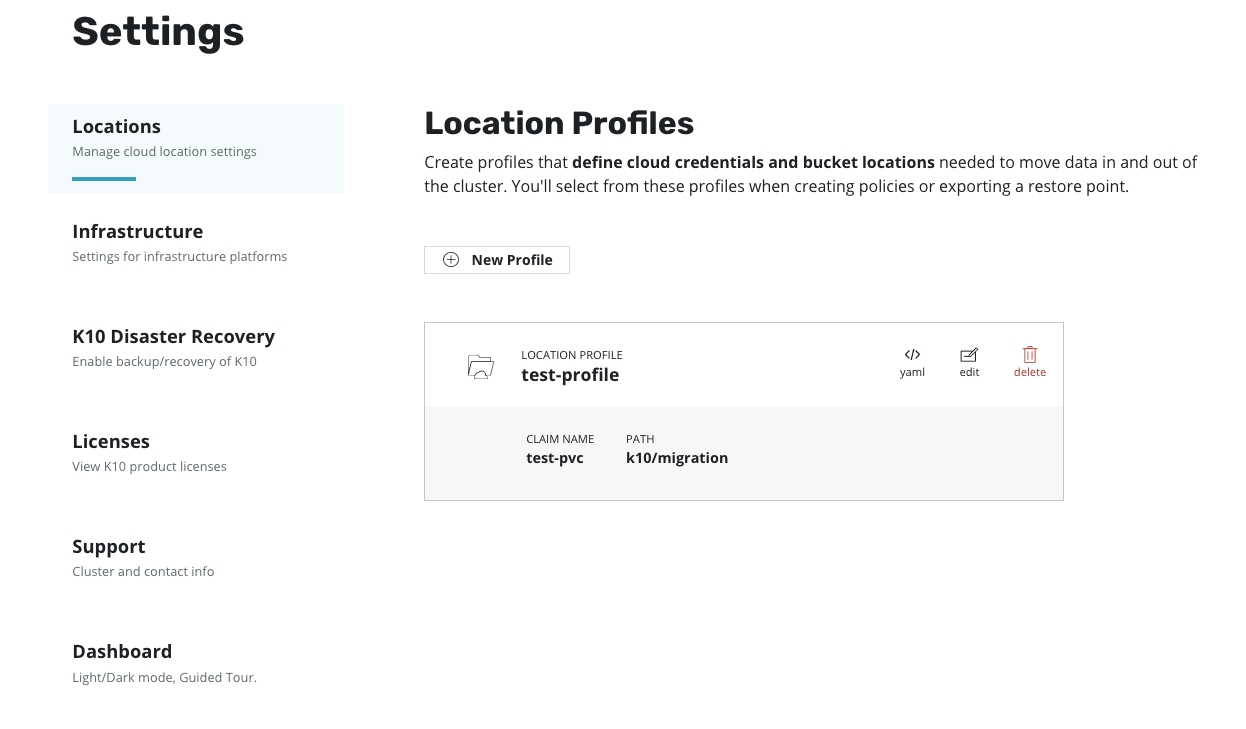Location Configuration¶
K10 can usually invoke protection operations such as snapshots within a cluster without requiring additional credentials. While this might be sufficient if K10 is running in some of (but not all) the major public clouds and if actions are limited to a single cluster, it is not sufficient for essential operations such as performing real backups, enabling cross-cluster and cross-cloud application migration, and enabling DR of the K10 system itself.
To enable these actions that span the lifetime of any one cluster, K10
needs to be configured with access to external object storage or
external NFS file storage. This is accomplished via the creation of
Location Profiles.
Profile creation can be accessed from the Settings icon in the
top-right corner of the dashboard or via the CRD-based Profiles
API.
Location Profiles¶
Location profiles are used to create backups from snapshots, move
applications and their data across clusters and potentially across
different clouds, and to subsequently import these backups or exports
into another cluster. To create a location profile, click New
Profile on the profiles page.
Object Storage Location¶
As mentioned above, exporting or importing data requires an object storage location. You are therefore required to pick an object storage provider, a region for the bucket if being used in a public cloud, and the bucket name. If a bucket with the given name does not exist, it will be created.
If an S3-compatible object storage system is used that is not hosted by one of the supported cloud providers, an S3 endpoint URL will need to be specified and optionally, SSL verification might need to be disabled. Disabling SSL verification is only recommended for test setups.
Note
When certain cloud providers (e.g., AWS) are selected, provider-specific options (e.g., IAM Roles) will appear for configuration if needed.
When Validate and Save is selected, the config profile will be
created and a profile similar to the following will appear:
NFS File Storage Location¶
Note
Support for NFS File Storage Location is currently in preview. Please contact support in case of any questions.
Enable the NFS Location Profile setting on the features page.
Assuming K10 is deployed with the release name k10 and the URL for
accessing K10 is https://example.com/k10, the features page will
be available at https://example.com/k10/#/features.
Requirements:
An NFS server reachable from the nodes where K10 is installed
An exported NFS share, mounted on all the nodes where K10 is installed
A Persistent Volume defining the exported NFS share similar to the example below:
apiVersion: v1 kind: PersistentVolume metadata: name: test-pv spec: capacity: storage: 10Gi volumeMode: Filesystem accessModes: - ReadWriteMany persistentVolumeReclaimPolicy: Recycle storageClassName: nfs mountOptions: - hard - nfsvers=4.1 nfs: path: / server: 172.17.0.2A corresponding Persistent Volume Claim with the same storage class name:
apiVersion: v1 kind: PersistentVolumeClaim metadata: name: test-pvc spec: storageClassName: nfs accessModes: - ReadWriteMany resources: requests: storage: 10Gi
Once the above requirements are met, an NFS FileStore location profile can
be created on the profiles page using the PVC created above.
When Validate and Save is selected, the config profile will be
created and a profile similar to the following will appear:
Note
The NFS File Storage Location is currently not supported for Kanister-Enabled Applications.
Location Settings for Migration¶
If the location profile is used for exporting an application for cross-cluster migration, it will be used to store application restore point metadata and, when moving across infrastructure providers, bulk data too. Similarly, location profiles are also used for importing applications into a cluster that is different than the source cluster where the application was captured.
Note
In case of NFS File Storage Location, the exported NFS share must be reachable from the destination cluster and mounted on all the nodes where K10 is installed.
